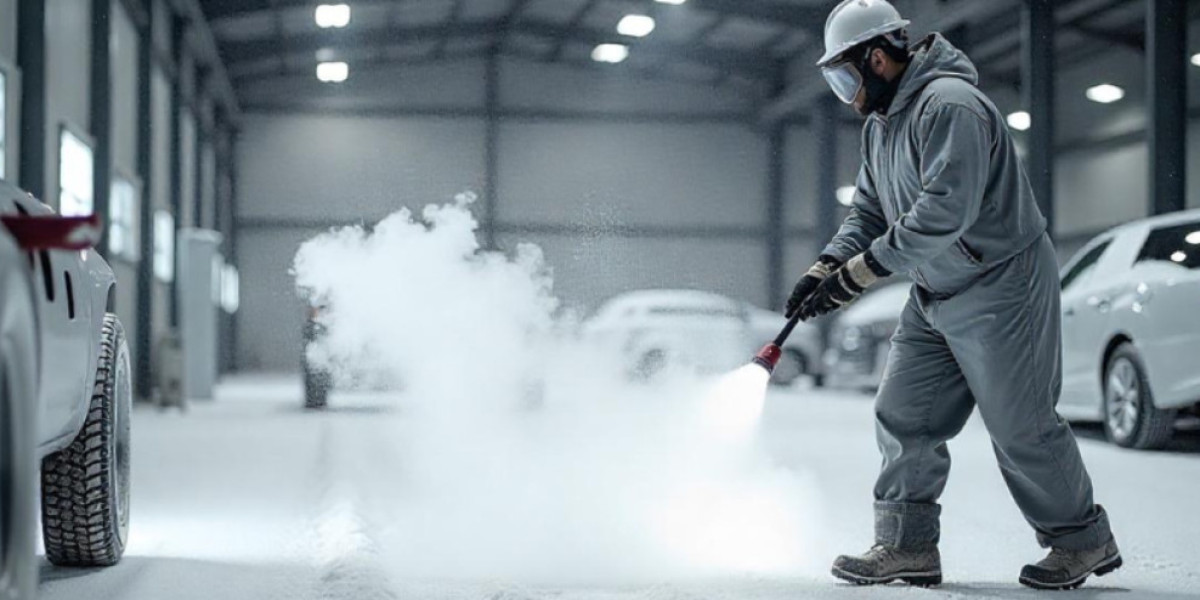What Is Dry Ice Blasting and Why Is It So Effective?
Dry ice blasting is a non-abrasive, eco-friendly, and highly effective cleaning method that uses solid carbon dioxide (CO₂) pellets as the blasting medium. When propelled at high velocity, these pellets sublimate on contact, transforming from solid to gas, effectively removing contaminants without damaging the underlying surface. Unlike sandblasting or chemical cleaning, dry ice blasting leaves no secondary waste, making it ideal for sensitive or complex environments.
Key Benefits of Dry Ice Blasting in Industrial Cleaning
The advantages of dry ice blasting are numerous, particularly in industrial applications:
Non-damaging to surfaces: Unlike abrasive media, dry ice is gentle and does not etch or wear down machinery.
Zero residual cleanup: Because dry ice sublimates, there's no slurry, residue, or additional waste.
Non-toxic and environmentally safe: CO₂ is a naturally occurring compound, and dry ice blasting does not involve harsh chemicals.
Reduces downtime: Equipment can often be cleaned in place without disassembly.
Prevents corrosion: Unlike water-based cleaning methods, dry ice does not introduce moisture.
Industries That Benefit Most From Dry Ice Blasting
Food and Beverage Manufacturing
Sanitation is critical in the food and beverage industry. Dry ice blasting removes baked-on residues, oil, and biofilms from processing equipment without contaminating production lines. It complies with FDA, USDA, and EPA standards, making it the ideal cleaning solution for food-grade environments.
Automotive and Aerospace
In these industries, precision and care are paramount. Dry ice blasting removes paint, adhesives, grease, and sealants without scratching delicate parts or electronics. It’s used to clean engine blocks, molds, and even aerospace components with maximum precision and safety.
Printing and Packaging
Dry ice blasting effectively cleans ink, paper dust, and glue buildup from printing presses and packaging machinery without disassembly. This significantly reduces maintenance time and enhances production efficiency.
Power Plants and Energy Facilities
Turbines, generators, and heat exchangers accumulate layers of grime and carbon residue that hinder performance. Dry ice blasting provides a fast, thorough, and residue-free cleaning option that keeps these critical systems running efficiently and safely.
How Dry Ice Blasting Works: The Science Behind the Process
Dry ice blasting works through three core principles:
Kinetic Energy: Dry ice pellets, accelerated by compressed air, strike contaminants at high speed, breaking them apart.
Thermal Shock: The -109°F (-78.5°C) temperature causes rapid freezing and cracking of residues, loosening them from the substrate.
Sublimation: As the dry ice hits the surface, it sublimates into gas, creating a mini-explosion that lifts contaminants away without leaving any secondary debris.
Dry Ice Blasting vs Traditional Cleaning Methods
| Feature | Dry Ice Blasting | Sandblasting | Chemical Cleaning |
|---|---|---|---|
| Abrasiveness | Non-abrasive | Abrasive | Non-abrasive |
| Residue | No secondary waste | Requires cleanup | Leaves chemical residue |
| Moisture | Dry process | Dry process | Wet process |
| Surface Compatibility | Safe for delicate parts | Risk of damage | Risk of corrosion |
| Environmental Impact | Eco-friendly | Dust emissions | Hazardous chemicals |
Eco-Friendly Cleaning for the Modern Age
As industries shift towards sustainable and green practices, dry ice blasting aligns perfectly with corporate environmental goals. It eliminates the need for solvents, reduces water usage, and minimizes waste disposal. Additionally, since it doesn’t introduce foreign media into the environment, it’s ideal for sensitive ecological zones and indoor applications where air quality must be preserved.
Cost Efficiency and ROI of Dry Ice Blasting
Though the initial equipment cost for dry ice blasting can be higher than traditional methods, the long-term ROI is significant. Companies benefit from:
Reduced labor and cleaning time
Lower equipment wear and tear
Minimal production downtime
Less spending on chemicals and disposal
When evaluating cleaning solutions on a total-cost basis, dry ice blasting emerges as a financially smart and operationally superior choice.
Safety Considerations and Operator Training
Dry ice blasting is generally safe when proper safety protocols are followed. Operators should wear:
Eye protection
Hearing protection
Insulated gloves
Training includes understanding CO₂ handling, ventilation needs, and safe equipment operation. Adequate airflow is essential since sublimated CO₂ can displace oxygen in poorly ventilated areas.
Choosing the Right Dry Ice Blasting Equipment
When selecting a dry ice blasting system, consider:
Blast pressure range
Pellet size and type
Air consumption rates
Nozzle versatility
Portability
Leading manufacturers provide machines for every scale—from compact units for electronics cleaning to industrial-grade machines for heavy-duty tasks.
Dry Ice Blasting and Regulatory Compliance
Many industries are governed by strict cleanliness and contamination regulations. Dry ice blasting helps meet or exceed standards set by:
OSHA
FDA
EPA
USDA
Its non-toxic, non-conductive, and dry application makes it one of the most compliant cleaning methods available today.
Future Innovations in Dry Ice Blasting Technology
With increasing demand, manufacturers are introducing automated dry ice blasting systems, robotic arms, and smart nozzles that monitor pressure, temperature, and residue levels in real-time. These innovations are paving the way for fully autonomous cleaning in high-precision industries like semiconductors and pharmaceuticals.
In conclusion, dry ice blasting is a game-changing advancement in industrial and commercial cleaning. Its superior efficiency, environmental friendliness, and safety make it an essential tool for companies aiming to modernize their maintenance practices and remain compliant with evolving industry standards.








